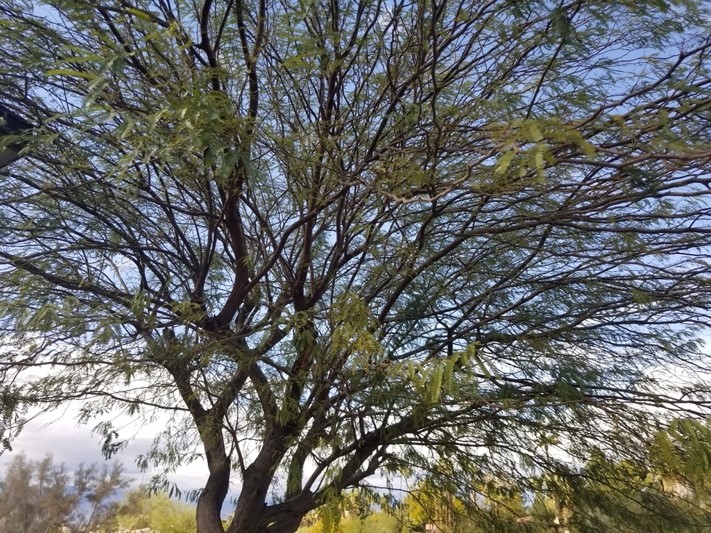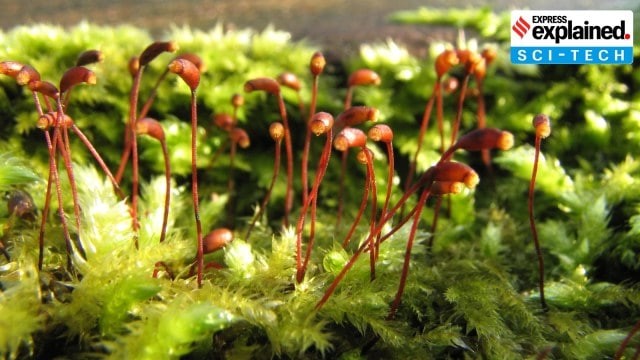Description

Disclaimer: Copyright infringement not intended.
Context
- Prosopis chilensis, an alien invasive plant is threatening to pulverise native vegetation across 21 islands in the Gulf of Mannar Biosphere Reserve (GoMBR), an avian distribution study has revealed.
About Prosopis chilensis
- A drought-resistant plant native to the arid regions of four South American countries — Argentina, Bolivia, Chile, and Peru — is not the only trouble for these islands divided into the Tuticorin, Vembar, Kilakkarai, and Mandapam groups.
- Prosopis chilensis is a species of tree in the genus Prosopis, belonging to the family Fabaceae.
- Its common names include Chilean mesquite (algarrobo chileno, in Spanish), cupesí (in eastern Bolivia), and Chilean algarrobo.

Description
- Prosopis chilensis is a medium-sized deciduous tree reaching a height of about 14 m
- chilensis flowers between October and December and the fruits ripen between February and April.
- It grows on light soils in arid regions.
- It is very drought resistant and it probably fixes nitrogen.
Uses
- Prosopis chilensis is used as a shade tree and for firewood.
- The leaves are used as fodder for livestock and the pods and seeds are of high nutritive value and are ground to make an animal feed.
- Honey bees, and several other species of bee, pollinate the flowers.
About Gulf of Mannar
- The Gulf of Mannar endowed with three distinct Coastal ecosystems namely coral reef, seagrass bed and mangroves is considered one of the world’s richest region from a marine biodiversity perspective.
- Designation date: 2001
- Regional network: South and Central Asia MAB Network (SACAM)
- Core area(s) : 623 ha, Buffer zone(s) : 54,837 ha, Transition zone(s): 994,540 ha

Ecological Characteristics
- The islands have irregular outlines, with splits and partially enclosed bays and often higher sandy beach ridges enclosing areas of mudflats and standing water with the bay.
- Seagrass beds serve as nursery and spawning grounds for diverse biota and habitat for macro and micro algae as epiphytes.
- This habitat is the feeding grounds for the largest endangered marine mammal Dugong i.e., Dugong dugon and, also, sea turtles.
- This area is also the last refuge of an invertebrate, the unique ‘living fossil’ Balanoglossus that links vertebrates and invertebrates.
Socio-economic characteristics
- The inhabitants are mainly Marakeyars, local people principally engaged in fisheries.
- The Global Environmental Facility (GEF) has provided support to the establishment of the biosphere reserve, including the setting up and functioning of the Gulf of Mannar Biosphere Reserve Trust, which is responsible for the coordination of the management plan for the biosphere reserve in concertation with government agencies, private entrepreneurs, and local people’s representatives.
- The famous pilgrim centre, Rameswaram, which finds place in the epic Ramayana (one of the great epics of India) is situated in the gulf on the island of Pamban.
- Habitat destruction, over-harvesting of marine resources, localized land-based sources of marine pollution, destruction of coral reefs, sea grass beds and mangroves are identified as main human impacts to the long-term viability of the resources.
|
PRACTICE QUESTION
Q) Which of the following statements with reference to Chilean Mesquite is/are correct?
a. It is a medium-sized deciduous tree.
b. It is native to the Indian subcontinent and South America.
c. It is very drought resistant.
- a and b
- b and c
- a and c
- None of the above
Answer: Option 3
|

https://www.thehindu.com/news/national/other-states/triple-trouble-for-gulf-of-mannar-islands-study-finds/article66692147.ece












